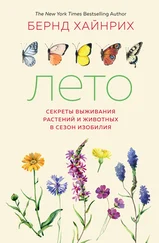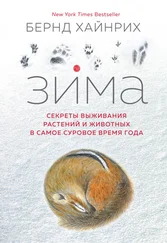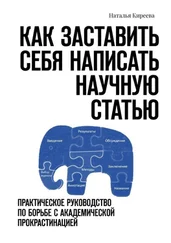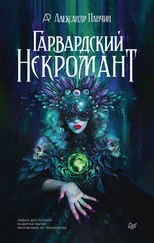292. Tuzhikov A. et al.: TUIT, a BLAST-based tool for taxonomic classification of nucleotide sequences. Biotechniques 2014, 56(2):78–84.
293. Bercik P. et al.: Microbes and the gut-brain axis. Neurogastroenterol Motil 2012, 24(5):405–13.
294. Foster J.A., McVey Neufeld K.A.: Gut-brain axis: how the microbiome influences anxiety and depression. Trends Neurosci 2013, 36(5):305–12.
295. Cryan J.F., Dinan T.G.: Mind-altering microorganisms: the impact of the gut microbiota on brain and behaviour. Nat Rev Neurosci 2012, 13(10):701–12.
296. Panchin A.Y. et al.: Midichlorians – the biomeme hypothesis: is there a microbial component to religious rituals? Biol Direct 2014, 9:14.
297. Brenner S.R.: Blue-green algae or cyanobacteria in the intestinal micro-flora may produce neurotoxins such as Beta-N-Methylamino-L-Alanine (BMAA) which may be related to development of amyotrophic lateral sclerosis, Alzheimer’s disease and Parkinson-Dementia-Complex in humans and Equine Motor Neuron Disease in horses. Med Hypotheses 2013, 80(1):103.
298. Bhattacharjee S., Lukiw W.J.: Alzheimer’s disease and the microbiome. Front Cell Neurosci 2013, 7:153.
299. Hirakawa H. et al.: Dissection of the octoploid strawberry genome by deep sequencing of the genomes of Fragaria species. DNA Res 2014, 21(2):169–81.
300. Shimomura O. et al.: Extraction, purification and properties of aequorin, a bioluminescent protein from the luminous hydromedusan, Aequorea. J Cell Comp Physiol 1962, 59:223–39.
301. Prasher D.C. et al.: Primary structure of the Aequorea victoria green-fluorescent protein. Gene 1992, 111(2):229–33.
302. Chalfie M. et al.: Green fluorescent protein as a marker for gene expression. Science 1994, 263(5148):802–5.
303. Heim R. et al.: Improved green fluorescence. Nature 1995, 373(6516):663–4.
304. Matz M.V. et al.: Fluorescent proteins from nonbioluminescent Anthozoa species. Nat Biotechnol 1999, 17(10):969–73.
305. Terskikh A. et al.: “Fluorescent timer”: protein that changes color with time. Science 2000, 290(5496):1585–8.
306. Livet J. et al.: Transgenic strategies for combinatorial expression of fluorescent proteins in the nervous system. Nature 2007, 450(7166):56–62.
307. Klein R.M. et al.: High-velocity microprojectiles for delivering nucleic acids into living cells. 1987. Biotechnology 1992, 24:384–6.
308. Daniell H. et al.: Transient foreign gene expression in chloroplasts of cultured tobacco cells after biolistic delivery of chloroplast vectors. Proc Natl Acad Sci USA 1990, 87(1):88–92.
309. Zambryski P. et al.: Ti plasmid vector for the introduction of DNA into plant cells without alteration of their normal regeneration capacity. EMBO J 1983, 2(12):2143–50.
310. Mojica F.J. et al.: Biological significance of a family of regularly spaced repeats in the genomes of Archaea, Bacteria and mitochondria. Mol Microbiol 2000, 36(1):244–6.
311. Pourcel C. et al.: CRISPR elements in Yersinia pestis acquire new repeats by preferential uptake of bacteriophage DNA, and provide additional tools for evolutionary studies. Microbiology 2005, 151(Pt 3):653–63.
312. Mojica F.J. et al.: Intervening sequences of regularly spaced prokaryotic repeats derive from foreign genetic elements. J Mol Evol 2005, 60(2):174–82.
313. Bolotin A. et al.: Clustered regularly interspaced short palindrome repeats (CRISPRs) have spacers of extrachromosomal origin. Microbiology 2005, 151(Pt 8):2551–61.
314. Makarova K.S. et al.: A putative RNA-interference-based immune system in prokaryotes: computational analysis of the predicted enzymatic machinery, functional analogies with eukaryotic RNAi, and hypothetical mechanisms of action. Biol Direct 2006, 1:7.
315. Barrangou R. et al.: CRISPR provides acquired resistance against viruses in prokaryotes. Science 2007, 315(5819):1709–12.
316. Jinek M. et al.: A programmable dual-RNA-guided DNA endonuclease in adaptive bacterial immunity. Science 2012, 337(6096):816–21.
317. Jinek M. et al.: RNA-programmed genome editing in human cells. Elife 2013, 2:e00471.
318. Wang H. et al.: One-step generation of mice carrying mutations in multiple genes by CRISPR/Cas-mediated genome engineering. Cell 2013, 153(4):910–8.
319. Gantz V.M., Bier E.: Genome editing. The mutagenic chain reaction: a method for converting heterozygous to homozygous mutations. Science 2015, 348(6233):442–4.
320. Liang P. et al.: CRISPR/Cas9-mediated gene editing in human tripronuclear zygotes. Protein Cell 2015, 6(5):363–72.
321. Ran F.A. et al.: Double nicking by RNA-guided CRISPR Cas9 for enhanced genome editing specificity. Cell 2013, 154(6):1380–9.
322. Tsai S.Q. et al.: Dimeric CRISPR RNA-guided FokI nucleases for highly specific genome editing. Nat Biotechnol 2014, 32(6):569–76.
323. Guilinger J.P. et al.: Fusion of catalytically inactive Cas9 to FokI nuclease improves the specificity of genome modification. Nat Biotechnol 2014, 32(6):577–82.
324. Davis K.M. et al.: Small molecule-triggered Cas9 protein with improved genome-editing specificity. Nat Chem Biol 2015, 11(5):316–8.
325. Maruyama T. et al.: Increasing the efficiency of precise genome editing with CRISPR-Cas9 by inhibition of nonhomologous end joining. Nat Biotechnol 2015, 33(5):538–42.
326. Chu V.T. et al.: Increasing the efficiency of homology-directed repair for CRISPR-Cas9-induced precise gene editing in mammalian cells. Nat Biotechnol 2015, 33(5):543–8.
327. Hemphill J. et al.: Optical Control of CRISPR/Cas9 Gene Editing. J Am Chem Soc 2015, 137(17):5642–5.
328. Nihongaki Y. et al.: Photoactivatable CRISPR-Cas9 for optogenetic genome editing. Nat Biotechnol 2015.
329. Chapman K.M. et al.: Targeted Germline Modifications in Rats Using CRISPR/Cas9 and Spermatogonial Stem Cells. Cell Rep 2015, 10(11):1828–35.
330. Gibson D.G. et al.: Creation of a bacterial cell controlled by a chemically synthesized genome. Science 2010, 329(5987):52–6.
331. Howard T.P. et al.: Synthesis of customized petroleum-replica fuel molecules by targeted modification of free fatty acid pools in Escherichia coli. Proc Natl Acad Sci USA 2013, 110(19):7636–41.
332. Sarria S. et al.: Microbial synthesis of pinene. ACS Synth Biol 2014, 3(7):466–75.
333. Kolisnychenko V. et al.: Engineering a reduced Escherichia coli genome. Genome Res 2002, 12(4):640–7.
334. Posfai G. et al.: Emergent properties of reduced-genome Escherichia coli. Science 2006, 312(5776):1044–6.
335. Malyshev D.A. et al.: A semi-synthetic organism with an expanded genetic alphabet. Nature 2014, 509(7500):385–8.
336. Kim T. et al.: A Synthetic Erectile Optogenetic Stimulator Enabling Blue-Light-Inducible Penile Erection. Angew Chem Int Ed Engl 2015.
337. Ferreira A. et al.: Sickle hemoglobin confers tolerance to Plasmodium infection. Cell 2011, 145(3):398–409.
338. Gao Z. et al.: An estimate of the average number of recessive lethal mutations carried by humans. Genetics 2015, 199(4):1243–54.
339. Novotna M. et al.: Toxoplasma and reaction time: role of toxoplasmosis in the origin, preservation and geographical distribution of Rh blood group polymorphism. Parasitology 2008, 135(11): 1253–61.
340. Pappas G. et al.: Toxoplasmosis snapshots: global status of Toxoplasma gondii seroprevalence and implications for pregnancy and congenital toxoplasmosis. Int J Parasitol 2009, 39(12):1385–94.
341. Flegr J. et al.: Increased incidence of traffic accidents in Toxoplasma-infected military drivers and protective effect RhD molecule revealed by a large-scale prospective cohort study. BMC Infect Dis 2009, 9:72.
342. Hart R., Norman R.J.: The longer-term health outcomes for children born as a result of IVF treatment: Part I – General health outcomes. Hum Reprod Update 2013, 19(3):232–43.
Читать дальше
Конец ознакомительного отрывка
Купить книгу
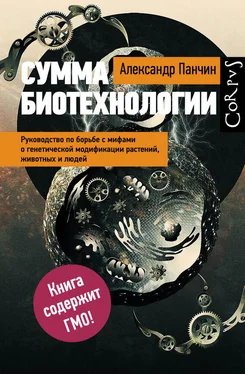



![Александр Панчин - Гарвардский Некромант [litres]](/books/390749/aleksandr-panchin-garvardskij-nekromant-litres-thumb.webp)


![Александр Панчин - Апофения [litres]](/books/435337/aleksandr-panchin-apofeniya-litres-thumb.webp)
